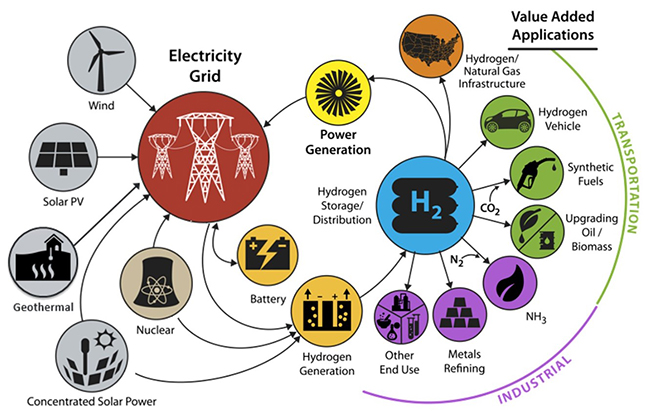Depending on the quality of the power mix, electricity can be converted into potentially green hydrogen by electrolysis.
The hydrogen can be then stored and eventually re-electrified.
The overall round-trip efficiency of this process, often identified as “Power to Power” route, is currently lower than other storage technologies.
Despite this low efficiency, the interest in hydrogen energy storage and eventually its reconversion to power, is growing, due to the much higher storage capacity compared to batteries (small scale) or pumped hydro and CAES (large scale).
Hydrogen can be re-electrified in fuel cells with efficiencies up to 50% or even higher when a combinad heat and power (CHP) set up could be used.
